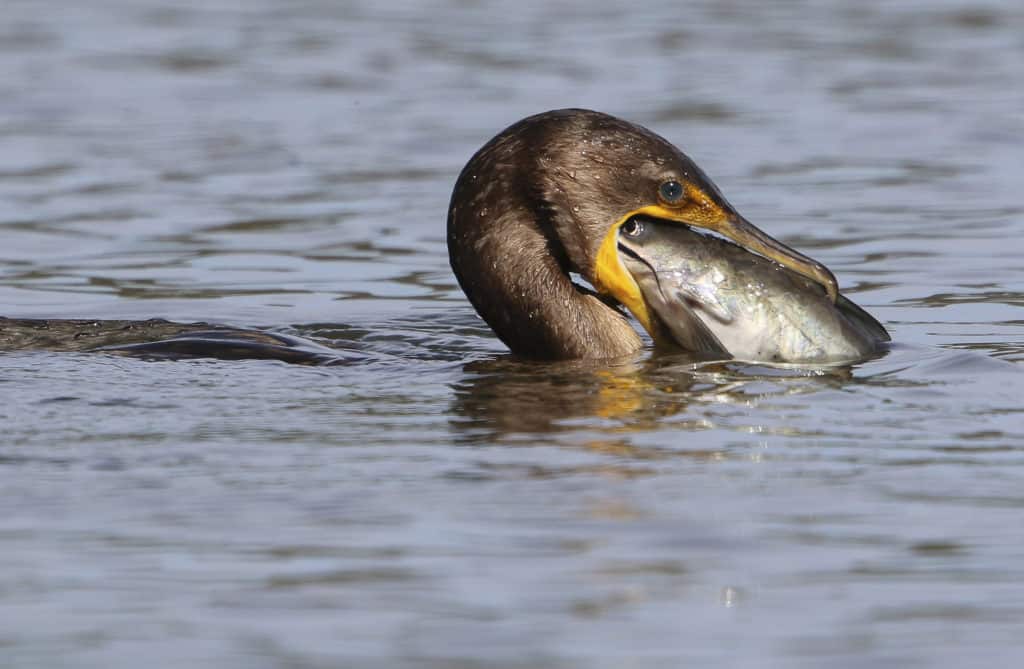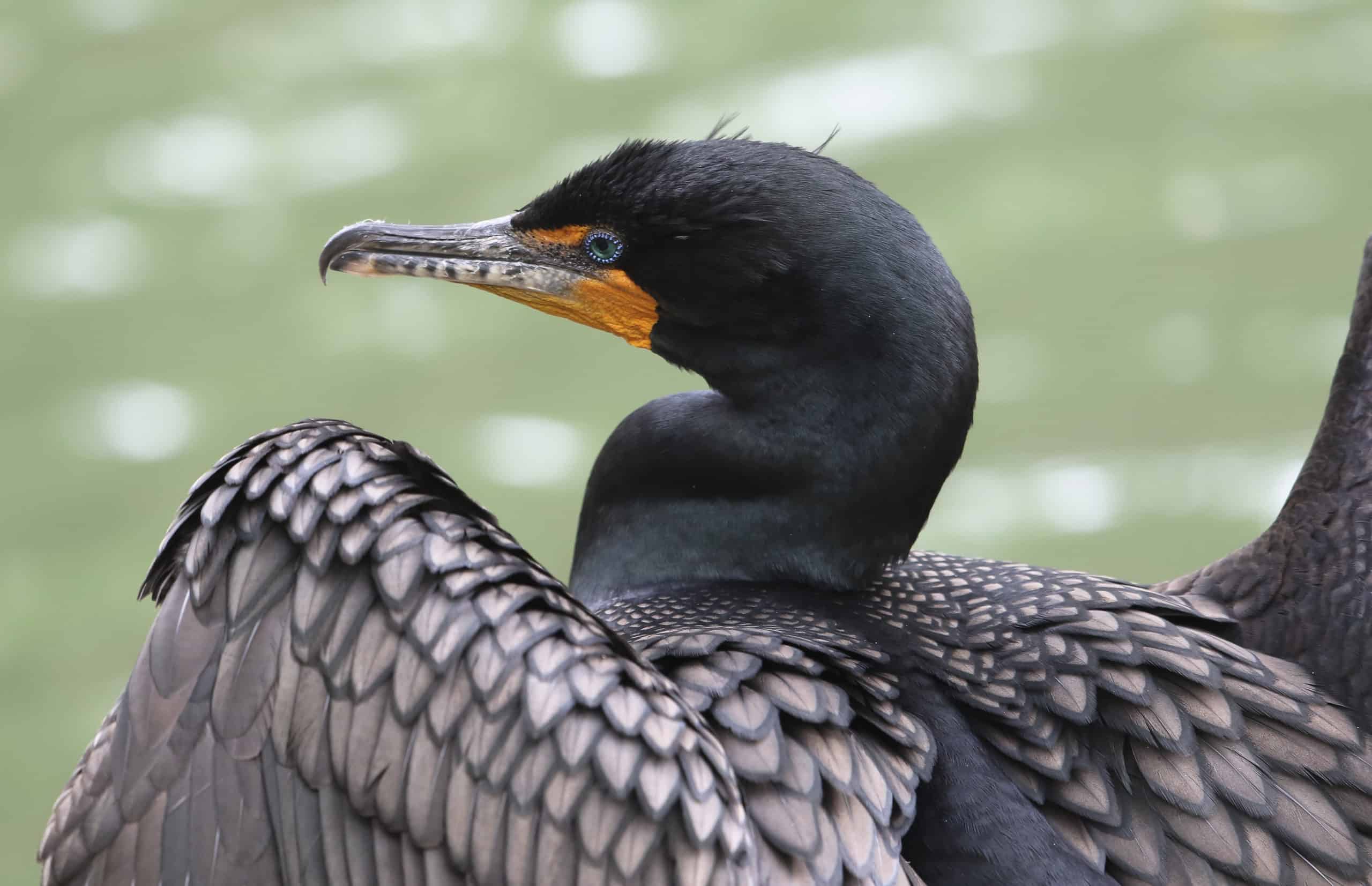Creature Feature

Double-crested Cormorants
A common sea bird of the Chesapeake Bay is the double-crested cormorant. Cormorants look like large black ducks sitting low in the water. Their eyes are a lovely aquamarine and they have a long bill with large tooth-like appendages at the end.
Large webbed feet and dense heavy bones make them excellent underwater swimmers. Cormorants feed on fish of all sizes from inch-long minnows to two-pound catfish. As they move from one feeding ground to another they fly in a squadron-like formation.
They are common throughout the United States with a large population from the central U.S. nesting in central Canada. The birds usually make large messy colonies. During courtship a pale crest will show over each eye. Each pair makes a loose stick nest and lays three to five eggs. The young hatchlings will be completely independent after ten weeks.
During the 1960s cormorants were severely affected by DDT but now their numbers are quite high. In some locations there has been a population explosion. Adult birds have few predators, while young birds are preyed on by raccoons, coyotes, alligators and snakes.
Over the last two months, new legislation has been proposed to limit their population. Large colonies are hurting fish farms and it is argued that they are hurting other native fish stock. Their colonies exclude other birds and their nesting practices kill trees. Breeding birds can render islands uninhabitable. Yet, there are no studies that show the cormorant’s impact on native fish. 
Currently fish farms have been allowed to kill thousands of cormorants but the proposal is for a larger control throughout 48 states. In the Chesapeake Bay region, the cormorant population does not seem to be an issue. They can be found all year long, but fly to open waters during freezing temperatures.
Cormorants are followed by fishermen as useful indicators of schooling baitfish. Gulls indicate when the fish are near the surface but the versatile swimming cormorant reveal where the deeper schools are. Commercial fishermen may lose some perch and shad to the birds fishing in their pound nets but I doubt it’s enough to warrant lethal control.
Along the Susquehanna River, I enjoy watching the cormorants catch catfish and then struggle to get the fish to lower their spines so they can be swallowed. The catfish sometimes win the battle and swim away.
In the South River, they show up in the creeks chasing the spring run of shad and alewife before the osprey show up.
